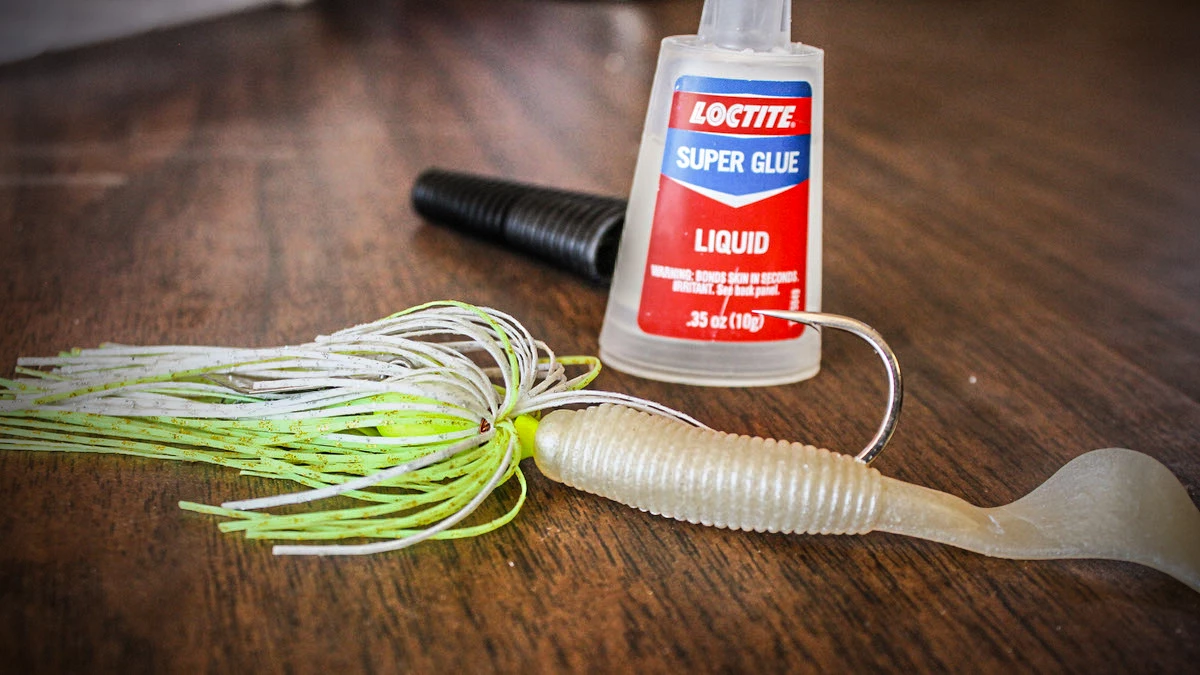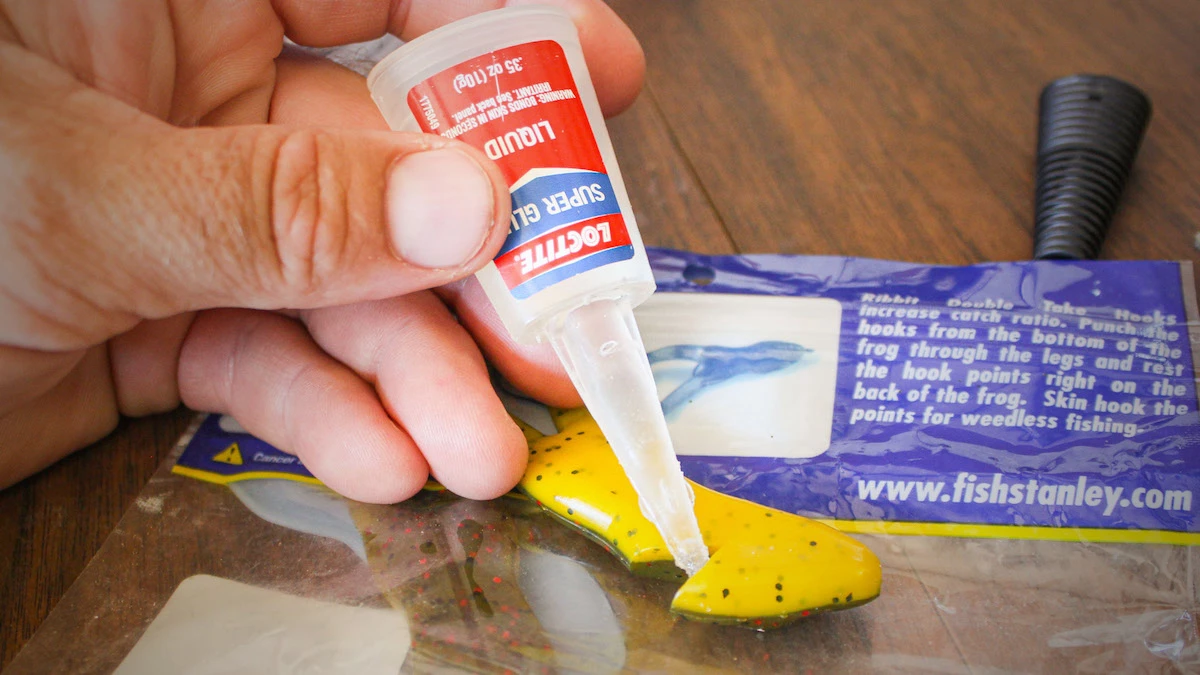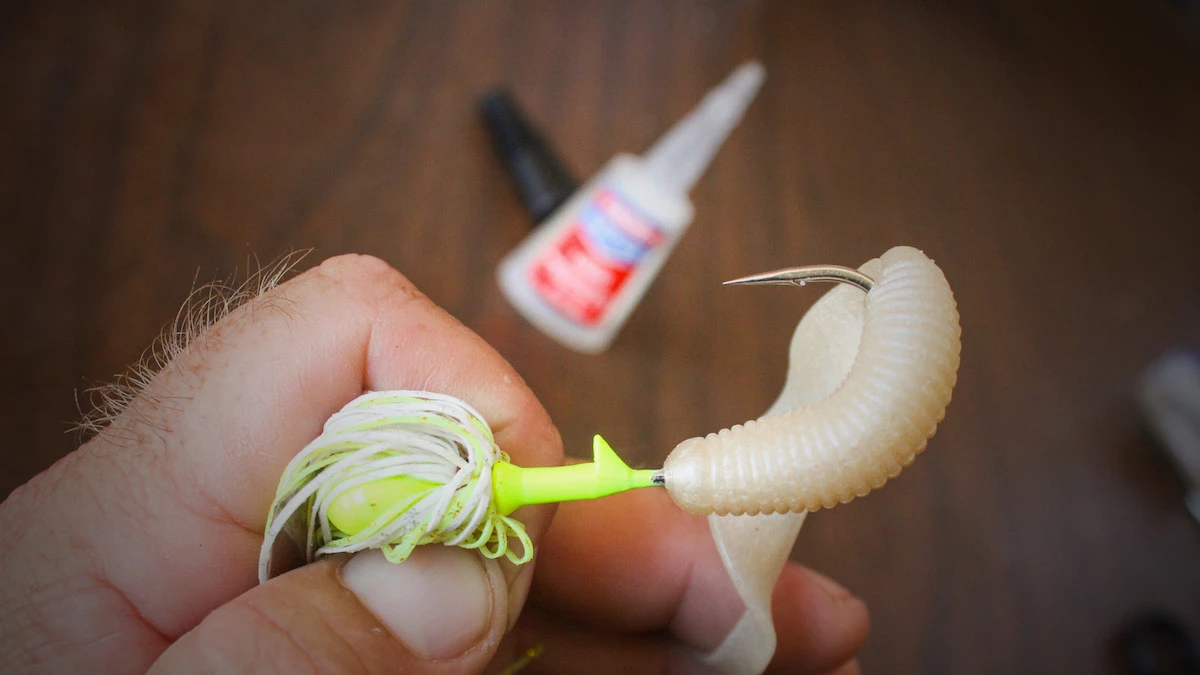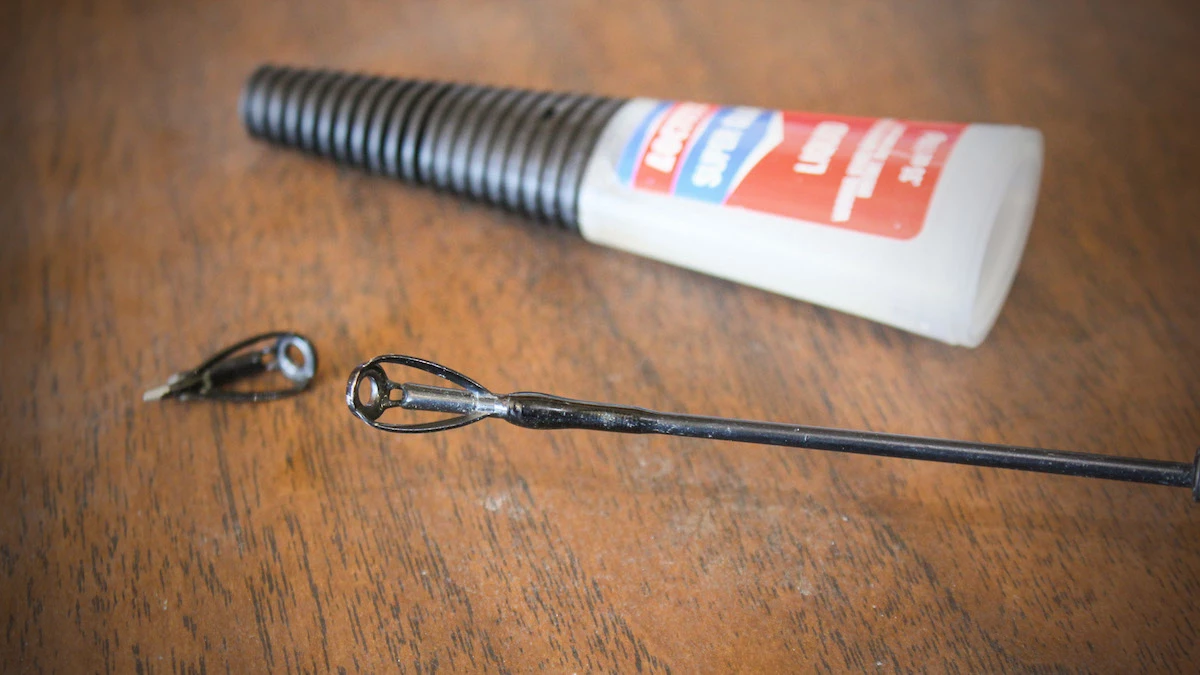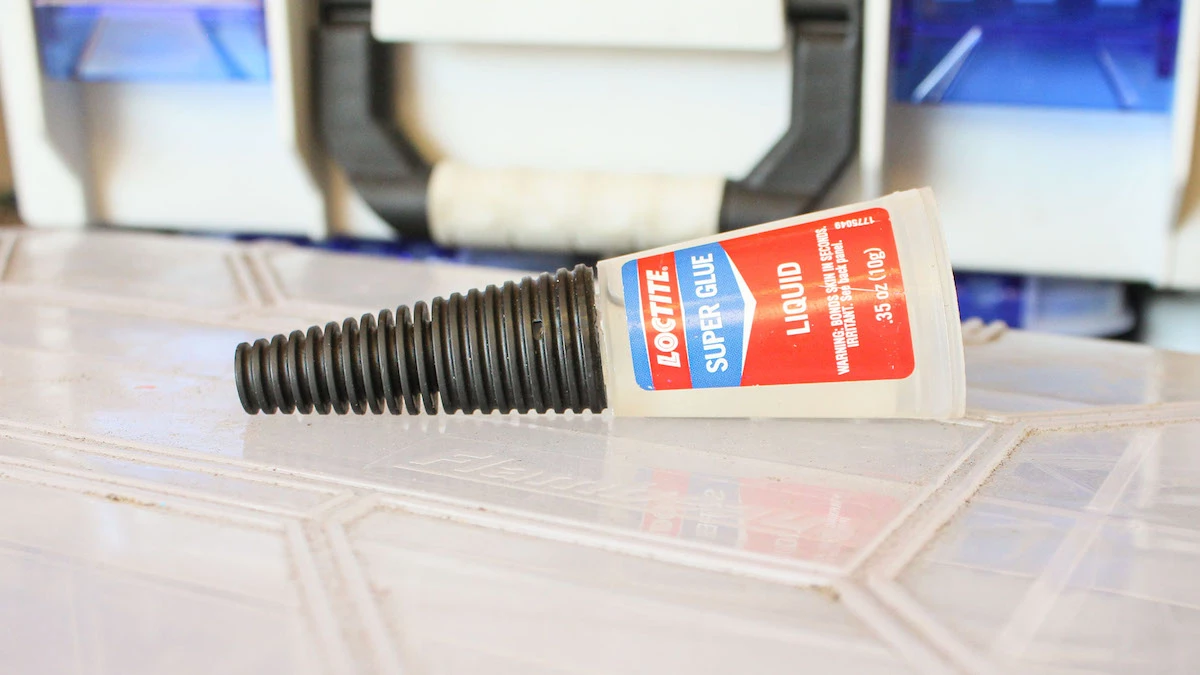If you’re into bass fishing, it’s a good idea to have a bottle of super glue handy. You can use this stuff to make all sorts of on-the-fly modifications, tweak tackle, mend baits, secure knots and the list goes on. Today we’re going to talk about a few of the common uses for super glue.
Securing your knot
This is one you’ll only want to do with braid, since super glue will actually damage the integrity of fluorocarbon and monofilament line. But the tag-end of braided line has a tendency to fray and can actually unravel to the point that it jeopardizes your knot and can pull free.
It’s best to leave 1/4 inch or so of tag-end on your braid and then add a drop of super glue to the tip of the tag-end to prevent the fibers from separating and the line from tattering.
This can make the tag-end a little rigid and cause it to catch on weeds and debris in the water. To prevent this, you can twist the tag-end around your main line as well if you’d like, which will make it a little more streamlined. But if you’ve ever gotten super glue on your fingers before, you know that it’s hard to get off. So just be careful here.
Mending soft plastics
Whether you’re just running low on worms or trying to salvage a high-dollar swimbait, super glue can save the day. Using a little glue to hold the head of a soft plastic together a little longer can help your bait last through a few more fish catches.
There are actually some higher-quality glues particularly designed for mending swimbaits and other expensive lures, Mend-it being the first to come to mind. So if you’re going to be gluing tails on and patching up a lot of swimbaits, you might want to look into something like this since it dries a little less rigidly.
But for the average angler, super glue can fix a bad situation and repair a big swimbait that gets a gash in it or loses a tail. Just make sure the surfaces are dry before applying the glue, and hold pressure for a few seconds when you piece it back together. Super glue is fast acting, especially the fluid version. If you’re using the gel super glue, it can take a little longer to dry.
Securing soft plastics
If you’re using soft plastics trailers on swim jigs, buzzbaits, spinnerbaits and the like, a drop or two of super glue can prevent a lot of re-rigging and lead to longer-lasting baits. This works really well when rigging a toad on a skirtless buzzbait, for instance.
If you’re using super glue on a bait with a skirt, it’s critical that you pull the skirt material up over the head of the bait and out of the way, as just a drop of super glue will stick several strands of the skirt together and cause a mess. With the skirt out of the way, take a drop of glue and put it just below the bait keeper on the shaft of the hook and then slide your soft plastic up and onto the bait keeper. This will coat the whole bait keeper with a thin layer of the glue as the bait slides up onto it.
Though this same technique will secure a worm to a shaky head well, this isn’t really something you’ll likely want to do. The reason being, the tails of these worms typically get torn off pretty quickly, then you have to scrape super glue and stuck on bits of soft plastic off of your jighead.
Ned rigs and small paddle-tail swimbaits, on the other hand, typically last for a few fish catches, so sometimes it makes sense to do this with those baits. That is unless you’re getting a lot of short strikes and losing the tails of your swimbaits pretty regularly.
Fixing rod tips and guides
Super glue also comes in handy if you break or lose a fishing rod guide. Though there are again some specifically designed adhesives for rod guide repair, super glue is great in a pinch and plenty sufficient as long as you’re not going to be working on dozens of rods as a side hustle.
To repair a rod tip, take a cigarette lighter and heat the old tip up for a few seconds; this will melt the old glue inside of it. Then you should be able to take a pair of pliers and slip that old eye off. Don’t do this with your fingers, you will get burned.
Use a knife or razor blade to carefully scrape off any additional adhesive still on the tip of the rod blank, but be sure not to cut down into the rod itself. Then put a drop of glue in the cavity of the new rod tip guide and slide it onto the tip of the rod, wiping off any excess glue quickly with a cloth. Be sure the tip is oriented correctly as you’re doing this, since the glue will setup quickly and you won’t be able to adjust it for long.
Final thoughts
In addition to these, I’ve personally used super glue before to secure a corner of carpet that’s starting to peel up in the boat, patch up a busted windshield on the console, reattach lettering to the boat, close up a cut and more.
Believe it or not, my dad was on the first day of his annual week-long fall retreat to Wheeler with our bass club a few years ago and had a cap fall off his tooth. He was faced with the decision to either drive four hours back home to the dentist, find a dentist in town or take matters into his own hands… let’s just say the dentist was quite impressed and mortified when dad finally got around to seeing him a couple weeks later.
Needless to say, not all of these uses of super glue are recommended. But you’d be surprised how handy it is to have around. Whether mending baits, securing knots, repairing rod guides or securing soft-plastic trailers, super glue has you covered. It’s best to leave the dental work to the professionals though.


